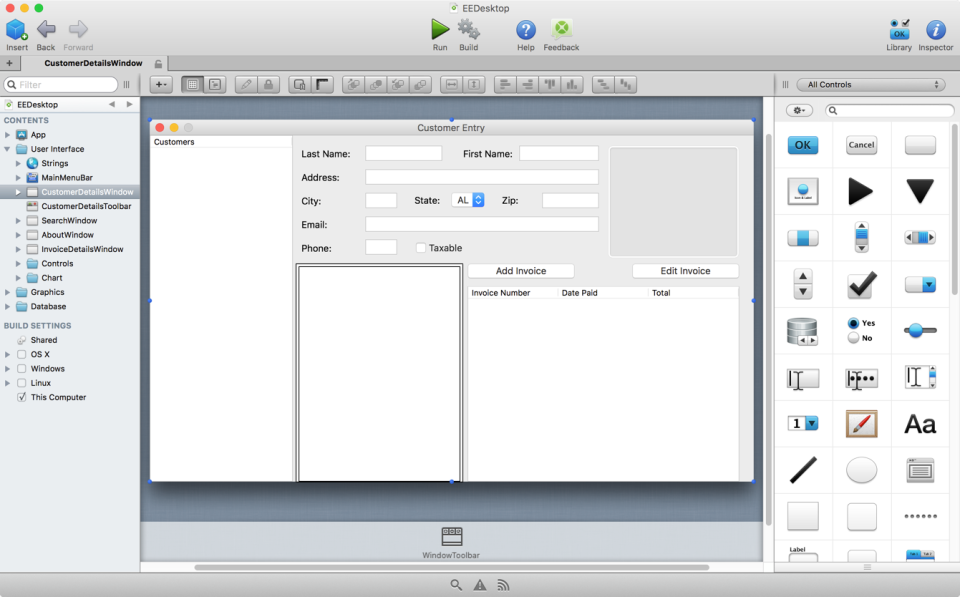

Lastly, you should always refer to the vendor-specific documentation for the database you are using to learn the specifics about how the database works, including SQL syntax. Creating a Database Application using Xojo.There are also several database webinars that you can watch: The Language Reference has the details of the all the database classes, which you can view here: Xojo User Guide Book 3: Framework, Chapter 4: Databases Have a question about files Ask me here or on twitter Published in Tips. Be sure to sign up for next week’s webinar: Dynamic Controls. The Xojo User Guide has a chapter on Databases that covers all the supported databases and provides lots of information to get you started: And of course, there are many other webinars there for you to watch as well. There are examples that can connect to each of the supported databases in the Examples/Databases folder.Īdditionally, you can check out the Eddie’s Electronics sample app (located in Examples/Sample Applications/EddiesElectronics) to see how to share database code between desktop and web apps.

To help you get started, you can check out the database examples that are included with Xojo. Plus you can use ODBC to connect to just about anything else, such as Microsoft Access, Firebird or even IBM iSeries. Direct support is included for these databases: SQLite, PostgreSQL, MySQL, Oracle Database and Microsoft SQL Server. Since this comes up so often, I’d like to take a moment to point people in the direction of the many resources available to you to learn how to use databases with Xojo.įirst, Xojo works with a wide variety of databases. I hear a lot from people that want to make database apps using Xojo but don’t know where to get started.


 0 kommentar(er)
0 kommentar(er)
